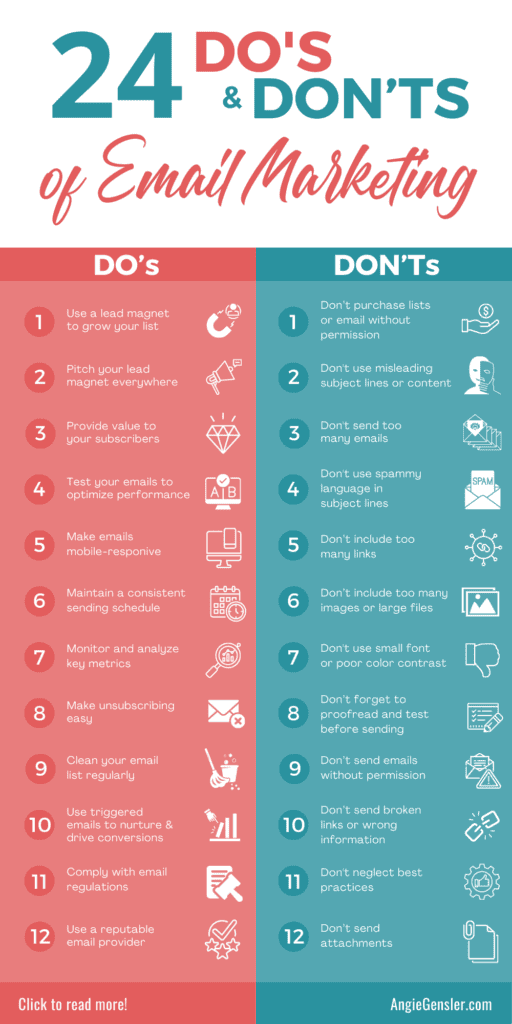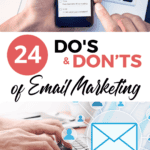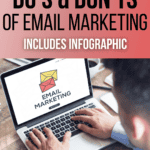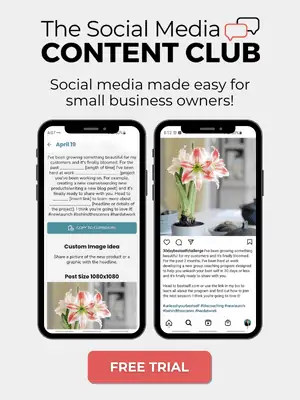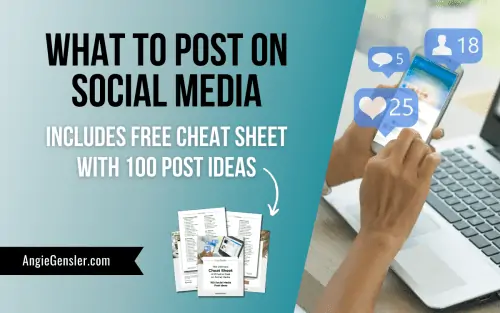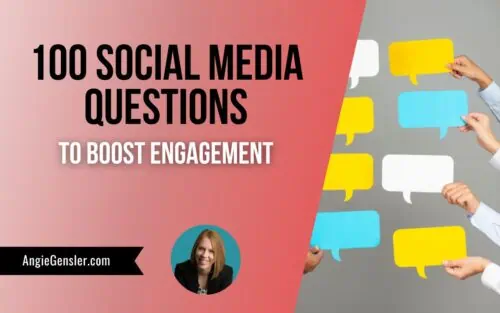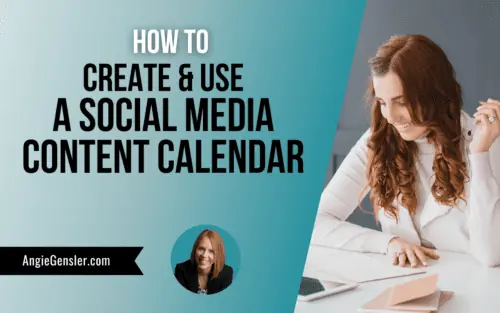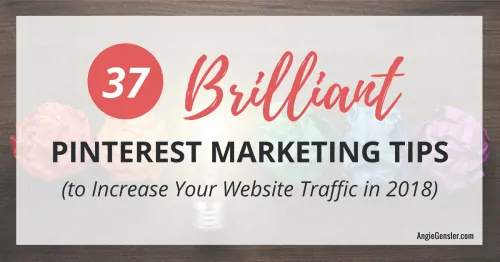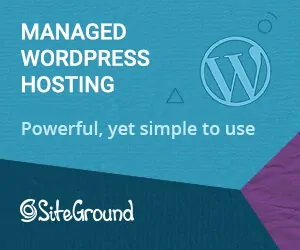Email marketing is one of the most powerful marketing strategies for business owners.
However, with the average person receiving over 100 emails a day, cutting through the clutter has never been more challenging.
Whether you’re a seasoned marketer or a small business owner venturing into the vast world of email marketing, your success relies on mastering certain email marketing tactics.
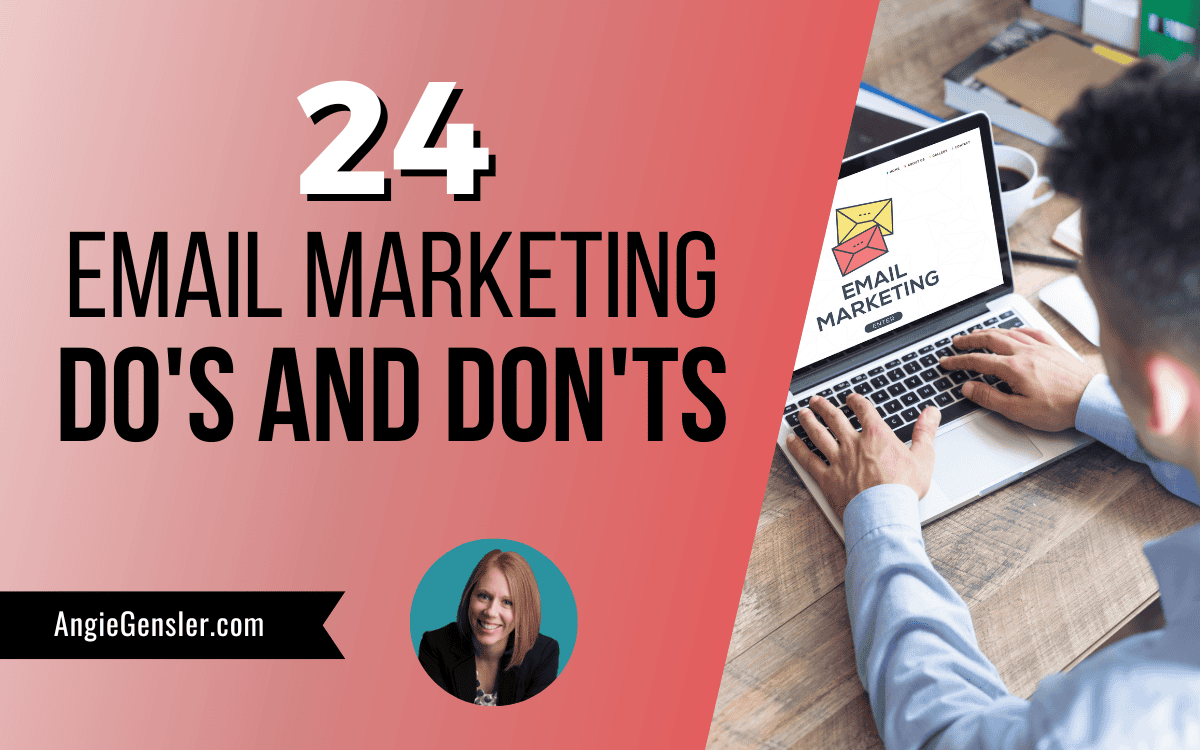
This guide lays out 12 essential do’s and 12 don’ts of email marketing that ensure your emails are not just sent but keep your email list happy and engaged.
So, let’s take a look at some key email marketing do’s and don’ts you need to know while promoting your business.
12 DO’s of Email Marketing
1. Do Use a Lead Magnet to Grow Your List
A lead magnet is an irresistible incentive you offer to potential subscribers in exchange for their email address.
It could be an eBook, a discount code, a webinar, or any valuable content that addresses a specific need or problem of your target audience.
The key to an effective lead magnet hinges on two things: relevance and value.
When done right, a lead magnet not only attracts more subscribers but also ensures that they are genuinely interested in what you have to offer.
For help creating a lead magnet, download my FREE Lead Magnet Templates for Canva.
This leads to a higher-quality email list, which in turn increases engagement and conversion rates for your email campaigns.
2. Do Pitch Your Lead Magnet Everywhere
Promotion matters when it comes to getting your lead magnet seen.
Your goal is to get it in front of as many eyes as possible.
Don’t limit yourself to only sharing it on your website or social media profiles.
Consider pitching your lead magnet through guest blogging, collaborations, bundles, and even paid advertising.
For more ideas on where to pitch your lead magnet, read: 25 Places to Pitch Your Lead Magnet.
A diverse pitching strategy ensures that you reach a wider audience, increasing the chances of attracting more subscribers.
Consider exploring various platforms and channels where your target audience hangs out and tailor your pitch accordingly to maximize visibility.

3. Do Provide Value to Your Subscribers
The primary goal of email marketing should be to build a relationship with your subscribers by offering consistent value.
While promotional emails have their place, bombarding your audience with sales pitches can lead to high unsubscribe rates.
Instead, focus on delivering helpful content, tips, and insights that address their pain points and interests.
By establishing yourself as a trusted source of valuable information, you’ll not only retain your subscribers but also make them more loyal and encourage them to share more about you.
4. Do Test Different Elements to Optimize Performance
Running tests and focusing on optimization is key to improving the performance of your email campaigns.
Regularly testing different elements, such as subject lines, content, and calls to action, allows you to identify what resonates most with your audience.
A/B testing, for instance, can provide valuable insights into which version of an email performs better in terms of open rates, click-through rates, and conversions.
By continuously experimenting and tweaking your email content, you can refine your approach and achieve better results over time.
5. Do Make Your Emails Mobile-Responsive
Did you know that more emails are opened on mobile devices than on computers?
That’s why it’s crucial to ensure that your emails are mobile-responsive.
A mobile-friendly design adapts to various screen sizes and ensures that your content displays correctly and is easily readable on all devices.
Ignoring this small detail can lead to a poor user experience, causing subscribers to delete your emails without reading them or even unsubscribe from your list altogether.
6. Do Maintain a Consistent Sending Schedule
Consistency is key to keeping your audience engaged.
Establishing a regular sending schedule helps your subscribers know when to expect your emails, making them more likely to open and engage with your content.
Whether you send weekly newsletters or bi-weekly updates, find a frequency that works for you and stick to it.
Consistency not only helps retain subscribers but also strengthens your brand presence and credibility over time.

7. Do Monitor and Analyze Key Metrics
Monitoring and analyzing key metrics such as open rates, click-through rates, and conversions helps you evaluate the success of your email campaigns.
These insights provide valuable information about what’s working and what needs improvement.
Use analytics tools to track your performance metrics regularly and adjust accordingly.
By paying close attention to these metrics, you can make data-driven decisions to optimize your email campaigns and achieve better results.
That way, you’re not just sending emails and hoping for the best.
8. Do Make Unsubscribing Easy
While it may seem like losing subscribers is a bad thing, it actually isn’t.
You only truly want to keep the people who want to be there.
Respecting your subscribers’ preferences in when and what they want to receive from you will help keep the relationship positive.
Have you ever tried to unsubscribe and couldn’t find a way to do so? Or had to jump through several hoops to complete the process?
Always provide a clear and easy-to-find unsubscribe option in your emails.
Not only does this comply with email marketing regulations, but it also enhances trust and credibility with your audience.
A hassle-free unsubscribe process shows that you value your subscribers’ choices, can reduce spam complaints, and can improve overall deliverability rates.
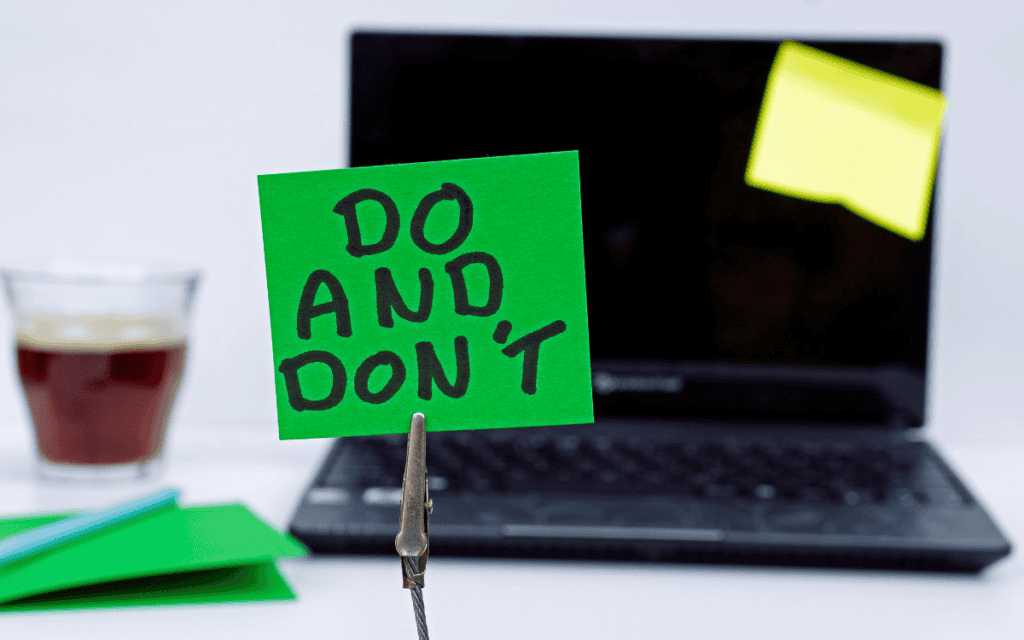
9. Do Clean Your Email List Regularly
Regularly cleaning your email list by removing inactive or bounced email addresses is essential for maintaining a healthy and engaged subscriber base.
An outdated or unresponsive list can negatively impact your email deliverability and open rates.
To clean your list, establish a routine—either weekly or monthly—to identify subscribers who haven’t opened an email in the last 120 days.
Move these inactive users to a special “inactive” list that gets excluded from your regular emails.
This strategy prevents them from receiving your regular newsletters, reducing the clutter in their inboxes while preserving your open rates.
Additionally, you could enroll these inactive subscribers in a re-engagement automation campaign.
This can help reignite their interest or encourage them to opt-out, further refining your list to include only those genuinely interested in your content.
By consistently cleaning your list, you can improve the effectiveness of your email campaigns and ensure that you’re reaching a relevant and engaged audience.
10. Do Use Triggered Emails to Nurture Leads
Triggered emails are automated messages sent in response to specific user actions or events, such as signing up for a newsletter or abandoning a shopping cart.
These emails are highly targeted and timely, making them incredibly effective for nurturing leads and driving conversions.
By setting up triggered email sequences, you can engage with your subscribers at key touchpoints in their customer journey, providing personalized content and offers that encourage them to take action.
It’s just one more way to keep customers engaged and happy.

11. Do Comply with Email Marketing Regulations
Compliance with email marketing regulations such as GDPR and CAN-SPAM is not just a best practice for maintaining trust and credibility with your audience, it’s the law.
You’ll want to familiarize yourself with the specific requirements of each regulation and ensure that your email marketing practices are in full compliance to avoid potential fines and penalties.
For starters, make sure to include a valid physical address in your footer, provide an easy way for subscribers to opt out, and avoid misleading subject lines and headers.
12. Do Use a Reputable Email Service Provider (ESP)
Choosing a reputable email service provider (ESP) is crucial for managing and optimizing your email campaigns effectively.
An ESP offers advanced features, automation tools, and analytics that help streamline your email marketing efforts.
Look for a provider that aligns with your business needs, offers reliable deliverability, and provides excellent customer support.
We use and highly recommend MailerLite for small business owners.
MailerLite is user-friendly, offers robust features, and is free to use until you hit 1,000 subscribers.
Investing in a quality ESP simplifies the email marketing process and ensures that your emails reach inboxes instead of spam folders.
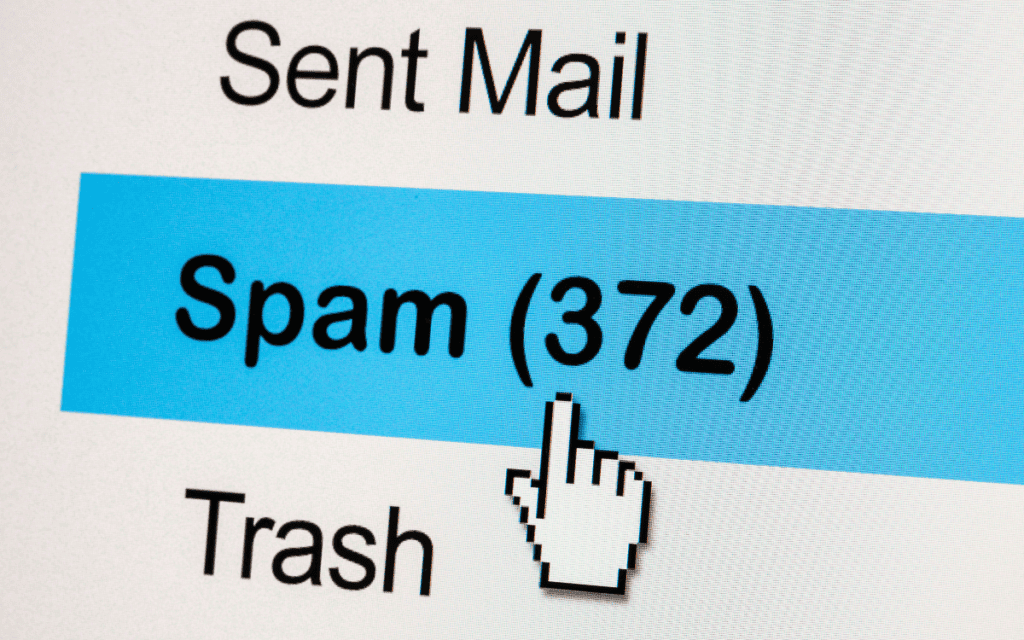
DON’Ts of Email Marketing:
1. Don’t Purchase Email Lists
Buying email lists might seem like a quick way to expand your reach, but it’s a big no-no in email marketing.
These lists often contain outdated or incorrect information and can harm your sender reputation.
Sending unsolicited emails can also violate anti-spam laws like the CAN-SPAM Act in the U.S.
In fact, some ESPs will ban your business if you commit too many grievances, and avoiding purchased lists is one way to help avoid the trouble.
Instead, focus on growing your email list organically.
Offer valuable content or incentives to encourage people to subscribe to your emails.
This way, you’ll build a list of engaged and interested subscribers who are more likely to open your emails and take action.
2. Don’t Send Emails With Misleading Subject Lines or Content
Trust is a key part of your relationship with your subscribers.
Misleading subject lines or content can erode that trust quickly.
If subscribers feel deceived, they’re less likely to engage with your emails in the future.
Always ensure that your subject lines accurately reflect the content of the email and avoid any clickbait tactics.
Be transparent and provide value to your subscribers to build a strong and trusting relationship.

3. Don’t Overload Subscribers With Too Many Emails
According to Venngage, people receive an average of 121 emails per day.
While staying top-of-mind is important, bombarding your subscribers with frequent emails can lead to email fatigue.
This can result in higher unsubscribe rates and decreased engagement.
Instead, focus on sending relevant and timely emails that provide value to your subscribers.
Consider segmenting your email list based on interests or behavior to deliver more personalized content.
This approach can help you maintain a healthy email-sending frequency and keep your subscribers engaged.
4. Don’t Use Spammy Language In Your Subject Lines
Spammy language like “Free Money!” can trigger spam filters and decrease your email deliverability.
That’s why it’s important to avoid certain words in your subject lines and content.
To avoid using spammy words, read this article with 188 Spam Words to Avoid.
Instead, focus on creating compelling and relevant subject lines that encourage readers to open your email without resorting to spammy tactics.
Over time, you’ll eventually find the right balance between engagement and deliverability.

5. Don’t Include Too Many Links
Including too many links in your emails can be overwhelming for subscribers and may come across as spammy.
Limit the number of links to essential ones that guide subscribers toward your desired action.
Make sure each link serves a clear purpose and adds value to the email content.
This streamlined approach can improve the user experience and increase the likelihood of subscribers taking the desired action.
Alternatively, you can also have a special section at the bottom of your email to share all your links in one place, so that your subscribers come to expect it and can skip it if they want.
6. Don’t Include Excessive Images or Large File Sizes
Large images and files can slow down email load times and frustrate subscribers.
Many email providers also block images by default, making an email that relies heavily on visual content less effective.
To avoid this, optimize your images and use them strategically to complement your email content rather than overpower it.
For files, include a download button or link and keep the file on your website or a site like Google Drive.
7. Don’t Use Small Fonts or Poor Color Contrast
Accessibility is more important than ever.
Using small fonts or poor color contrast can make your emails difficult to read, especially for subscribers with visual impairments.
Ensure that your emails are legible by using a clear and readable font size and high-contrast colors.
This approach not only improves the user experience but also ensures compliance with accessibility standards.
Other good ideas include always putting a description of any visual you add, a transcript with any audio, and providing as many usage options as possible.
8. Don’t Forget to Proofread and Test Your Emails
Have you ever read an email or visited a website and there were multiple obvious errors?
Typos and formatting errors can undermine your professionalism and credibility.
Always proofread your emails carefully for spelling and grammar mistakes.
Additionally, test your emails across different devices and email clients to ensure they display correctly.
This extra step can help you deliver polished and error-free emails that will help your subscribers keep their focus on the content.

9. Don’t Send Emails Without Permission
Sending emails without the explicit permission of the recipients is not only unethical but also illegal under many data protection laws, such as GDPR and the CAN-SPAM Act.
To ensure that you only send emails to people who are genuinely interested, consider implementing a double opt-in strategy.
This process requires subscribers to confirm their email subscription through a secondary verification step, typically by clicking on a link sent to their email after the initial sign-up.
This extra layer of confirmation helps to prevent spam and unauthorized sign-ups, guaranteeing that your list consists solely of individuals who actively want to receive your emails.
Employing double opt-in not only complies with legal standards but also significantly enhances subscriber engagement and builds a foundation of trust and respect with your audience.
10. Don’t Send Broken Links or Incorrect Information
Broken links and incorrect information can frustrate subscribers and diminish the effectiveness of your email campaigns.
Personally, I won’t keep trying because my time is too valuable, so I end up clicking away in frustration.
Always double-check the accuracy of your links and content before sending emails.
Regularly review and update any outdated information to keep your emails relevant and valuable to subscribers.

11. Don’t Neglect Email Deliverability Best Practices
It’s tempting to want to skirt around the rules sometimes.
After all, you’re running a small business and rely on numbers, clicks, subscribers, and, ultimately, sales.
But it’s important to pay close attention to best practices like maintaining a good sender reputation, using a consistent sending schedule, and monitoring email engagement metrics.
Implementing these practices can help improve your email deliverability and ensure that your emails reach the inbox rather than the spam folder.
12. Don’t Send Emails with Attachments
If you’re like me, you won’t open an attachment if you don’t know who it’s from or didn’t request it.
We’ve all likely experienced a virus at one point or another.
That’s what makes attachments raise red flags for spam filters and increase the likelihood of your emails being marked as spam.
Instead of sending attachments, consider linking to the relevant content or hosting it on a webpage.
This approach not only improves email deliverability but also provides a better user experience by reducing the risk of viruses and ensuring compatibility across different devices.
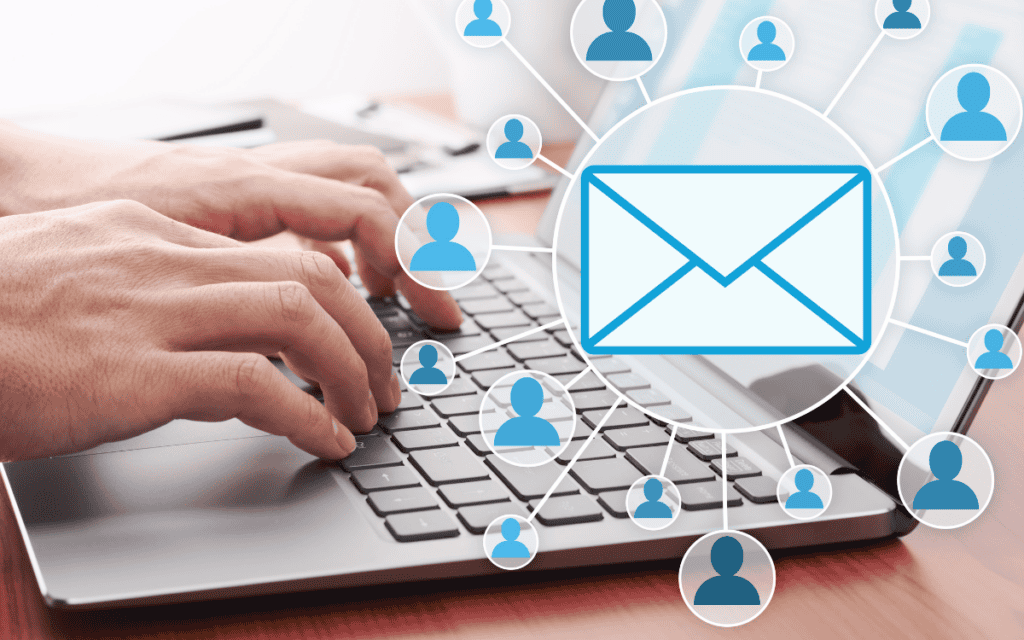
Conclusion
Email Marketing is a crucial part of a business’s overall marketing strategy.
It provides a way for you to connect with your customers while ensuring 100% ownership of the content, list, and deliverability.
After all, they joined your email list because they like what you have to offer, and they are likely to engage with and buy from you.
By following these 24 email marketing dos and don’ts, you’ll continue to cultivate a reputable, trusted relationship with your audience.
Did you find this article helpful? We’d love it if you shared it with others.
Infographic
